ASRock CoreHT 252B Review
by Ganesh T S on September 2, 2011 3:45 AM EST- Posted in
- HTPC
- Intel
- ASRock
- Media Streamer
Video post processing aspects such as skin tone correction and denoising are part of the HQV 2.0 benchmark. However, it is cadence detection which forms a major part of the tested aspects. Deinterlacing is closely tied with cadence detection. Although deinterlacing, by itself, is not stressed in the HQV 2.0 benchmark, it is very important for the end users.
In contrast to the performance of the Core 100, the CoreHT 252B manages to ace all the HQV 2.0 cadence detection tests.
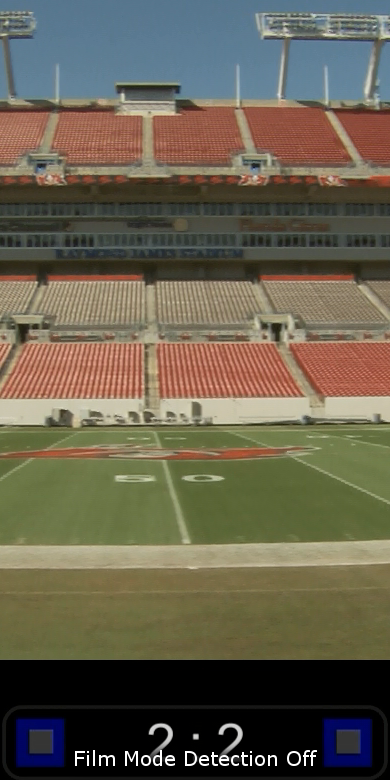 |
|
| Film Mode Detection Off | Film Mode Detection On |
2:2 Cadence Detection Test Stream from the HQV 2.0 Benchmark
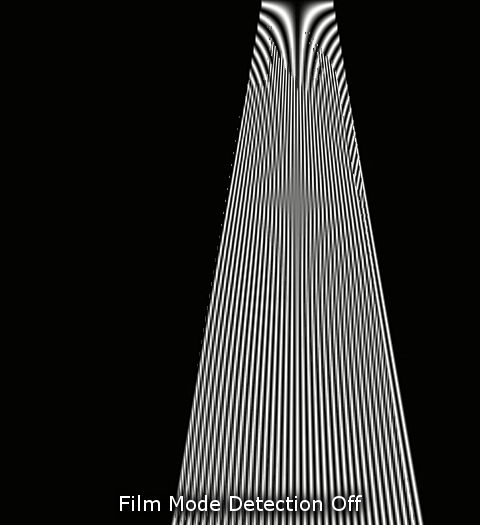 |
|
| Film Mode Detection Off | Film Mode Detection On |
2:3:2:3 Cadence Detection Test Stream from the Spears & Munsil Test Disc
Despite handling these test streams properly, the GPU fails at localized cadence detection for scrolling text on the video. This is reflected in the HQV benchmark score also. As the GPU takes its time to lock on to the local cadence (the scrolling text and the video do not have the same cadence), the text appears shredded for quite some time at the start.
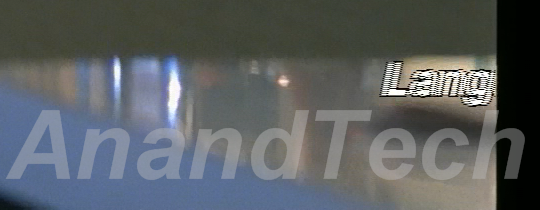
Scrolling Text Shredding (HQV 2.0 Benchmark Clip)
In order to determine the deinterlacing capabilities, we took the standard Cheese Slices clip and put it through the CoreHT 252B. The interlaced H.264 version was played back using DXVA (MPC-HC / EVR-CP / Microsoft DTV-DVD Decoder). For this clip, we compare the quality of deinterlacing with the Core 100 and Vision 3D. The Zino 410 would made a good comparison point. Unfortunately, the Zino review unit is longer in our hands.
Deinterlacing - Video Reference
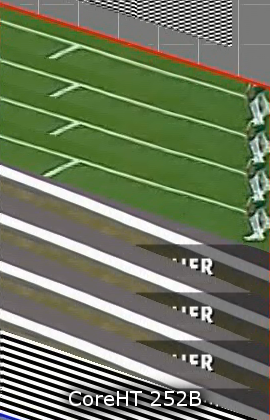 |
||
| CoreHT 252B | Core 100 | Vision 3D |
Deinterlacing - Cheese Slice Ticker
 |
||
| CoreHT 252B | Core 100 | Vision 3D |
Deinterlacing - Noise Response
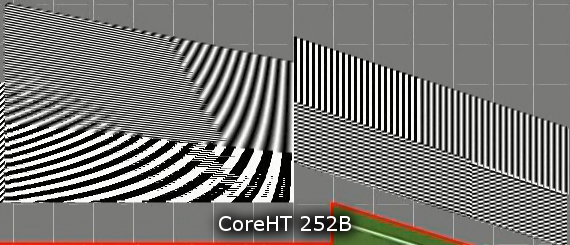 |
||
| CoreHT 252B | Core 100 | Vision 3D |
Deinterlacing - Algorithm Type
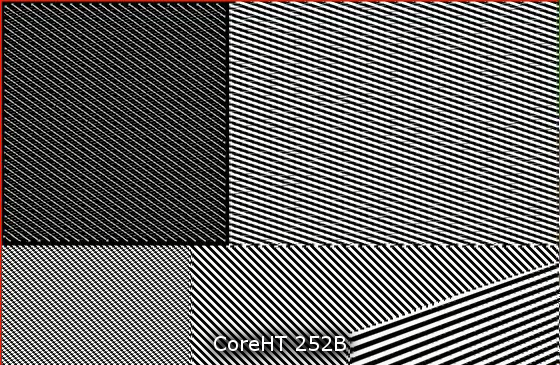 |
||
| CoreHT 252B | Core 100 | Vision 3D |
Deinterlacing - Disc Test
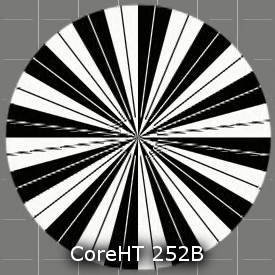 |
||
| CoreHT 252B | Core 100 | Vision 3D |
It is quite clear that the deinterlacing quality of Intel HD Graphics 3000 is not as good as the GT 425M in Vision 3D. However, it does show some improvement over the Intel HD Graphics in the Core 100.
Moving on to real life streams, we compare the CoreHT 252B and the Vision 3D with respect to the playback of the boat sequence from the Spears & Munsil test disc.
 |
|
| CoreHT 252B | Vision 3D |
Edge Adaptive Deinterlacing Test Stream from the Spears & Munsil Test Disc
In this stream which tests edge adaptive deinterlacing, there is actually nothing to choose inbetween the GT 425M and the Intel HD Graphics 3000. The nature of the ropes around the sail is almost exactly the same. Before moving on to the next section, we have to note that the AMD Radeons remain the GPUs to beat when it comes to deinterlacing quality.










54 Comments
View All Comments
casteve - Friday, September 2, 2011 - link
page 3, GPU paragraph:"However, WiDi is supported by the CoreHT 252B. "
I think you meant to say NOT supported.
Great article! Thanks, Ganesh.
ganeshts - Friday, September 2, 2011 - link
Thansk! Fixed.jensend - Friday, September 2, 2011 - link
If somebody made a system like this with a 65W Llano, esp. an A8-3800, I'd be all over it. Mobile Llano would be ok as well. (Barebones would be nice- I'd like to put in my own small ssd, and I have no need for Blu-Ray.)Foggg - Friday, September 2, 2011 - link
I thought there was a chance that ASRock's next level "Vision 3D series" which Ganesh referred to was possibly so-named because of AMD's "Vision" labeling for the Llano's.No such luck. That series has mobile i7's/i5's/i3's paired with Nvidia's GT425M. Guaranteed to be pricier than a mobile Llano. And for most, unnecessary, given this uses for this thing.
smdx - Friday, September 2, 2011 - link
Following the last comment, is there any news on a possible update for the ZInoHD 410 line? (I guess they will be using Llano on their next lineup)Last year model was presented in September 2010...
Don't know in Anandtech has any feedback on this...
jabber - Friday, September 2, 2011 - link
Yeah would be nice. I got one in for a customer and he loves it. I thought it a great bit of kit.Shadowmaster625 - Friday, September 2, 2011 - link
I would like to see performance and power consumption comparisons to a desktop running an i3-2105. I suspect they are close, even though the i3 costs significantly less. My scam radar is going off like crazy here. Since when is a small form factor worth that much? Why not just buy a notebook and use that as your HTPC???? That is a much higher volume product and thus it is highly likely you'll be able to find one on sale for cheaper than this product.Shadowmaster625 - Friday, September 2, 2011 - link
Just saw these on slickdeals:Sony VPC EG13FX/B 14" Notebook - i5 / 500GB / 4GB RAM - $549 @ Frys
(New) ThinkPad Edge E420/ i5-2520M/ Win7 HP 64/ 2GB/ 320GB/ 9-Cell for $488 @ lenovo outlet
ganeshts - Friday, September 2, 2011 - link
Yes, a laptop can be a portable HTPC nowadays.As you say, pricing is just a matter of scale. I would expect this to weigh in around the 500 - 600 range. Laptops are mass produced. So, they have an advantage there.
justniz - Friday, September 2, 2011 - link
I'm looking for a mythtv frontend.But this thing has Intel graphics and you can't buy it without windows.
What stupid marketing decisions. I think I'll pass.
I would have bought one if they had a nVidia GPU and a no-OS or Linux option.